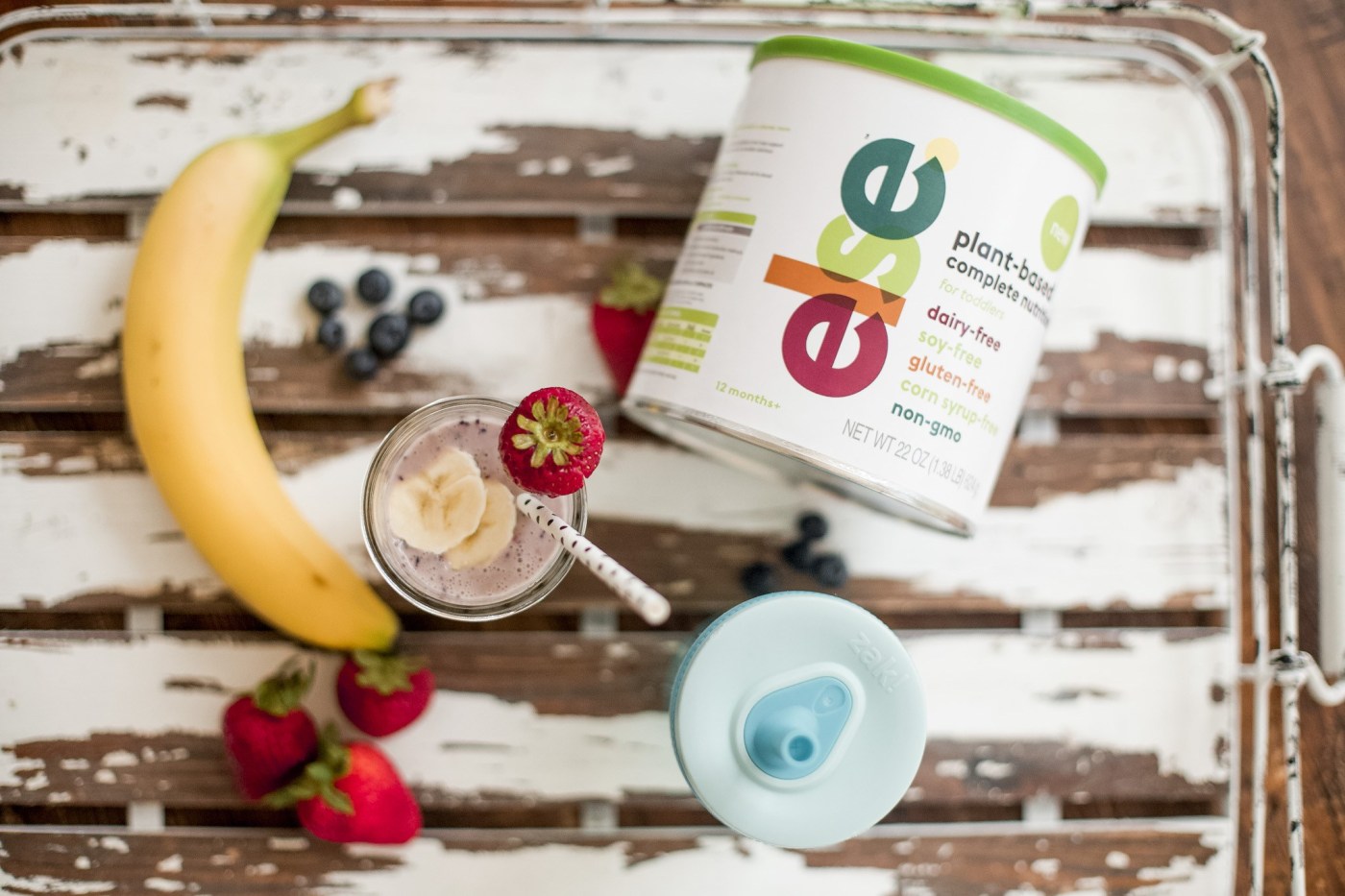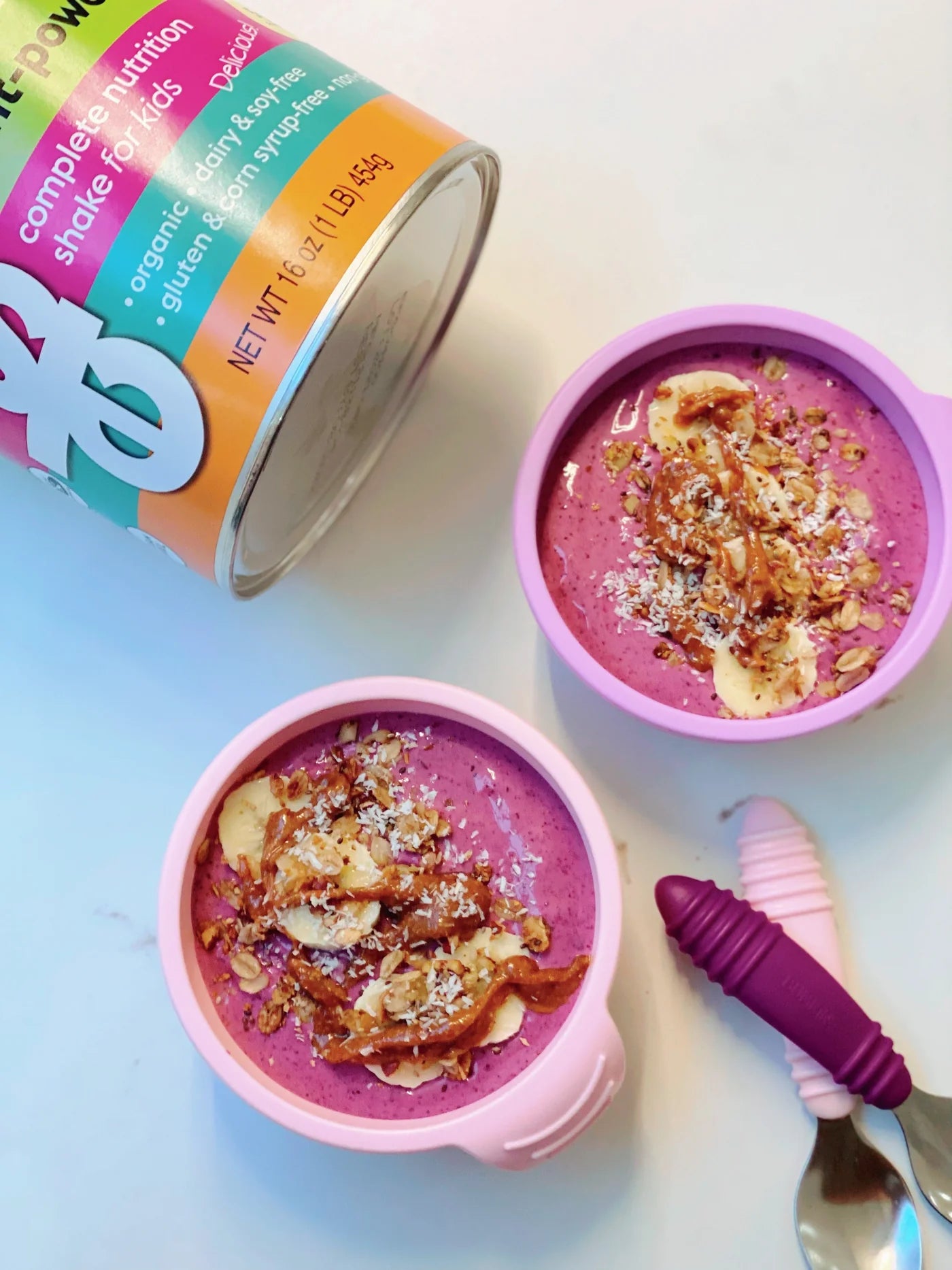
Are you working through your toddler’s transition to solids? This comprehensive guide provides easy, nutritious “food for 1 year olds” that will support their growth and satisfy their curiosity for new flavors. Get ready to explore simple recipes and meal ideas designed to adapt to your little one’s dietary milestones.
Key Takeaways
-
Young toddlers need around 1,000-1,400 calories per day, including dietary fats for brain development and specific nutrients like calcium, vitamin D, and iron.
-
Transitioning from baby food to more solid foods is important around the age of one, focusing on new textures and the introduction of finger foods to encourage self-feeding and independence.
-
For picky eaters, persistence in offering new foods, modeling good eating behaviors, and creating a positive mealtime environment can encourage trying and accepting a variety of foods.
Understanding Your 1-Year-Old's Nutritional Needs
When your baby turns one and becomes a toddler, their nutritional needs change. At this stage, 1-year-olds require approximately 1,000–1,400 calories per day. They need these calories for their regular activities and overall development. But it’s not just about calories; the quality of food matters too. Young toddlers rely on dietary fats for normal growth and brain development.Toddlers also need other nutrients such as calcium, vitamin D, and iron in their diet. These nutrients can be sourced from milk and yogurt, alongside fat and protein from other varied foods. It’s also crucial to ensure proper hydration, especially when they’re active, ill, or in hot temperatures. It’s always a good idea to consult your child’s pediatrician for personalized advice on your toddler’s calories and nutritional needs.
Transitioning from Baby Food to Solid Foods
The transition from baby food to solid foods is a significant milestone in your child’s dietary journey. It’s not just about introducing new foods but also about teaching your child to eat independently. Around the age of 4 to 6 months, you can start introducing one-ingredient pureed foods such as avocado or peas. Start with vegetables before fruits to manage palate preferences and monitor for reactions over a three-day period.
As your child becomes more adept at eating, you can increase the consistency of food to thicker textures like eggs or smashed fruits and vegetables. By the time your baby turns one, solid foods should become their main source of calories and nutrition, decreasing their reliance on breastmilk or formula.
It’s also a great time to introduce finger foods, using small pieces the size of the baby’s fingertip and ensuring they are safe and free from choking hazards.
Else Toddler Formulas Can Make the Transition easy for 1 Year Olds

Making the transition from breast milk or formula to solid foods can be a challenging phase. This is where Else Toddler formulas can come in handy. They can be used daily or occasionally, as part of a dietary plan that includes breast milk, cow milk, or solid foods. Else Toddler is a non-milk-based toddler formula that is designed to supplement the diet of toddlers aged 1-3 years.
What’s unique about Else Toddler is that it is nutritionally tailored for different age groups, with different compositions to meet the specific needs of each age group. The formula contains all macronutrients and 20+ essential vitamins and minerals, making it a complete and balanced nutrition drink for toddlers. The formula also contains Omega 3 and Omega 6 fatty acids, which are beneficial for brain development.
Breakfast Ideas for 1-Year-Olds
Breakfast is an essential meal, and it’s no different for your little one. It provides the energy your toddler needs to start their day and contributes to their overall nutrient intake. Here are some nutritious and easy-to-prepare breakfast ideas for your toddler:-
2-Ingredient Pancakes
-
Easy Banana Cookies
-
Quick Scrambled Eggs
-
Coconut Chia Pudding
The key is to introduce variety to breakfast to avoid a monotonous diet and encourage dietary variety from an early age.

Fruity Overnight Oats
One of the easiest and most nutritious breakfast options is Fruity Overnight Oats. You can prepare them by:
-
Mixing oats, cinnamon, raisins, and seeds in a bowl
-
Adding milk and yoghurt
-
Adding a grated apple
-
Covering the mixture
-
Refrigerating it overnight
In the morning, you have a delicious, nutrient-packed breakfast ready. You can serve it as is or enhance it with additional fruit toppings like banana, strawberry, or blueberry, depending on your child’s taste preferences.
Veggie-Packed Mini Quiches
Looking for healthy breakfast meal ideas? Try Veggie-Packed Mini Quiches! These mini delights are perfect for packing a variety of vegetables into your child’s diet. The key ingredients include:-
eggs
-
milk
-
cheese
-
a mix of vegetables like spinach, bell peppers, and mushrooms
For families with dietary restrictions, dairy-free cheese and cow’s milk substitutes can be used.
The mini quiches are not only rich in essential vitamins and minerals but also provide an enjoyable way for children to eat greens.
Berry Smoothie Bowl
If your toddler loves fruits, a Berry Smoothie Bowl could be the perfect breakfast option. Smoothies provide a way for toddlers to consume more fruits, contributing to their daily nutritional needs.
The vibrant colors and creamy texture of Berry Smoothie Bowls make them visually appealing to young toddlers, which can entice them to eat healthily.

Lunch Ideas for 1-Year-Olds
When it comes to lunch, there are plenty of nutritious and appealing options for 1-year-olds. Some ideas include:
-
Soft bits of chicken
-
Ground turkey
-
Extra-Veggie Baby Pasta
-
Zucchini and Corn Fritters
The possibilities are endless.
The key is to provide balanced meals that are suitable for your child’s diet and ensure they are getting the right nutrients.
Deconstructed Sandwiches
One fun and nutritious lunch option for your 1-year-old is Deconstructed Sandwiches. By presenting the ingredients separately, this method allows toddlers to self-feed and become familiar with the different components of their meals, helping them explore textures and flavors in a manageable way.
What’s more, deconstructed sandwiches are practical and facilitate the inclusion of various nutrients while being compatible with baby-led weaning techniques.
Colorful Veggie Rice Bowl
A Colorful Veggie Rice Bowl can be a nutritious and eye-catching lunch option for 1-year-olds. The bowl can be customized to include favorites and can cater to budget constraints, offering flexibility in meal preparation.Using a range of warm and cold vegetables, brown rice, and creamy spreads can result in a palate-pleasing dish that’s also packed with nutrients.
Lentil & Veggie Patties
Lentil & Veggie Patties are suitable for 1-year-olds and can be prepared using the following ingredients:
-
Red lentils
-
Zucchini
-
Carrot
-
Peas
-
Corn
These patties provide essential proteins and nutrients that contribute to the growth and development of toddlers.
Plus, the Lentil and Veggie Patties recipe is a flexible lunch idea, rich in protein and fiber, which can be customized with different vegetables according to a child’s taste preferences.
Snack Ideas for 1-Year-Olds
In between meals, it’s important to provide your toddler with healthy and nutritious snacks. From fruit and veggie sticks and homemade trail mix to mini rice cakes with nut butter, there are numerous snack options that are both nutritious and easy to prepare.
These snacks not only fill your child’s tummy but also provide them with essential nutrients they need for their growth and development.
Fruit & Veggie Sticks with Dip
Fruit and Veggie Sticks with Dip can be a healthy and easy-to-handle snack for your toddler. Safe fruits for toddlers like:
-
berries
-
kiwi
-
mandarin oranges
-
bananas
Sweet potato can be cut into sticks and served with a dip like yogurt or peanut butter.
The addition of a healthy dip not only increases the overall nutrient content but also adds essential protein and fats, making the snack more satiating for a 1-year-old.
Homemade Trail Mix
Another nutritious snack option is Homemade Trail Mix. It can be prepared using a variety of ingredients tailored to your child’s preferences and nutritional needs. Ingredients like soft, bite-sized pieces of dried fruits such as apricots and figs, and cooked, unsalted nuts or seeds can be added for texture and healthy fats. Just make sure to avoid ingredients that are hard, sticky, or a choking risk, and always supervise your child during snack time.
Mini Rice Cakes with Nut Butter
Mini Rice Cakes with Nut Butter can be an excellent snack for toddlers due to their texture and nutrient content. Nut butter is a good source of healthy fats and proteins essential for a toddler’s growth. The rice cakes should be light and airy for toddlers to handle easily and prevent choking.To make it easy for toddlers to eat and to reduce the risk of choking, nut butter should be spread thinly on the rice cakes.
Dinner Ideas for 1-Year-Olds
When it comes to dinner, there are several nutritious and appealing options for 1-year-olds. From proteins like turkey meatballs to One-pot meals like a no-stir Mushroom Quinoa Risotto and Chicken Quinoa Casserole, the possibilities are endless. The key is to provide balanced meals that are suitable for your child’s diet and ensure they are getting the right nutrients.
Baked Fish Fingers
Baked Fish Fingers can be a nutritious and appealing dinner option for your toddler. You can prepare them by slicing fish fillets into strips and coating them with a seasoned mix of breadcrumbs, cheese, and lemon zest. Once they’re baked until golden and crispy, they can be served with a tangy lemon herb crème fraîche dip.
This meal is not only delicious but also packed with essential nutrients for your 1-year-old.
Veggie-Packed Spaghetti Bolognese
Veggie-Packed Spaghetti Bolognese is a flavorful and nutrient-rich dinner option. This dish contains a variety of vegetables including:
-
onion
-
leek
-
celery
-
red pepper
-
carrot
-
mushrooms
-
apple
It also includes minced beef as a source of protein.
A tomato-based sauce is used to combine all the ingredients together, and the dish is seasoned with herbs and garnished with Parmesan cheese.
One-Pot Lentil & Vegetable Stew
A One-Pot Lentil & Vegetable Stew can be an easy and nutritious dinner option for 1-year-olds. Cooking the stew in a single pot aims to minimize the effort required for cleanup. Moreover, the cooking time for the stew is designed to be less than 30 minutes, making it perfect for busy weeknight dinners.
Tips for Encouraging Picky Eaters
If your toddler is experiencing picky eating, you are not alone. Many parents face this challenge. It may take offering a new food 10-15 times before a child will try it, and children often mimic their parents’ reactions to food offerings.
To help your toddler develop healthy eating habits, try the following strategies:
-
Allow children to self-feed and participate in family meals without pressure
-
Offer a variety of foods and flavors
-
Be a role model by eating a variety of healthy foods yourself
-
Make mealtime a positive and enjoyable experience
-
Avoid using food as a reward or punishment
By implementing these strategies, you can promote independence and help establish healthy eating habits for your toddler.
Creative presentation of food, such as using cookie cutters for sandwiches and providing tasty dips for fruits and vegetables, can make meals more enticing for picky eaters. Early exposure to different flavors and textures, along with the inclusion of children in family meals, fosters greater food acceptance when a child eats the same food as familiar foods, especially in 1-year-olds. Understanding and catering to individual food preferences can further enhance the success of family meals.
Allergy-Friendly Food Options
Food allergies are a concern for many parents. According to the American College of Allergy, Asthma, and Immunology, around 4-6% of kids suffer from food allergies. The most common food allergies in children are:
-
Eggs
-
Dairy milk
-
Peanuts
-
Tree nuts
-
Fish
-
Shellfish
-
Wheat
-
Soy
To accommodate children with food allergies, you can use staples such as fresh fruits and vegetables, gluten-free pasta, and alternative dairy products like soy and rice milks, and cook with coconut oil or olive oil and use gluten-free flours for baking. You can also utilize allergy-friendly options such as natural peanut butter or seed butters like sunflower butter as protein-rich dips for fruits and veggies.
Meal Planning & Preparation Tips
Meal planning and preparation can be a game-changer when it comes to feeding your toddler. Repurposing leftovers from meals into new bowls or warm sandwiches can provide variety for subsequent meals and make meal prep more efficient. Involving your child in meal preparation can make them more likely to try their creations, leading to a smoother feeding process.
Consultation with the child’s pediatrician is always advised for guidance on growth and developmental milestones, which can influence meal planning and preparation. A homemade trail mix, composed of cereal, small crackers, dried fruit, and age-appropriate nuts or seeds, is a suitable snack option for toddlers.
Summary
In conclusion, feeding your 1-year-old doesn’t have to be a stressful task. By understanding their nutritional needs, introducing them to a variety of foods, and making mealtime enjoyable, you can ensure that your toddler gets the nutrients they need for their growth and development. With a little creativity and planning, every breakfast, lunch, dinner, and snack time can be a delightful experience for both you and your toddler.
Frequently Asked Questions
What are the nutritional needs of a 1-year-old?
A 1-year-old needs approximately 1,000–1,400 calories per day, along with dietary fats, calcium, vitamin D, and iron for normal growth and development. For personalized advice, it's best to consult your child's pediatrician.
How can I make the transition from baby food to solid foods easier?
Start by introducing one-ingredient pureed foods around 4 to 6 months, and gradually transition to thicker textures. By age one, solid foods should be the main source of calories and nutrition for your baby.
What are some healthy breakfast ideas for 1-year-olds?
You can try 2-Ingredient Pancakes, Easy Banana Cookies, Quick Scrambled Eggs, and Coconut Chia Pudding for a healthy breakfast for your 1-year-old. They are nutritious and simple to prepare.
How can I encourage my picky eater to try new foods?
Encourage your picky eater to try new foods by presenting them creatively, offering new foods multiple times, allowing self-feeding, and involving them in meal preparation. It can make them more likely to try their creations.
What are some allergy-friendly food options for toddlers?
For toddlers with food allergies, consider providing fresh fruits and vegetables, gluten-free pasta, and alternative dairy products like soy and rice milks. You can also offer natural peanut butter or seed butters as protein-rich dips for fruits and veggies. These options can help meet their nutritional needs while avoiding allergens.
This article was reviewed by Kayla Bridges, DCN, MS, RD-AP. Kayla Bridges is Director of Medical & Scientific Affairs at Else Nutrition, North America.





